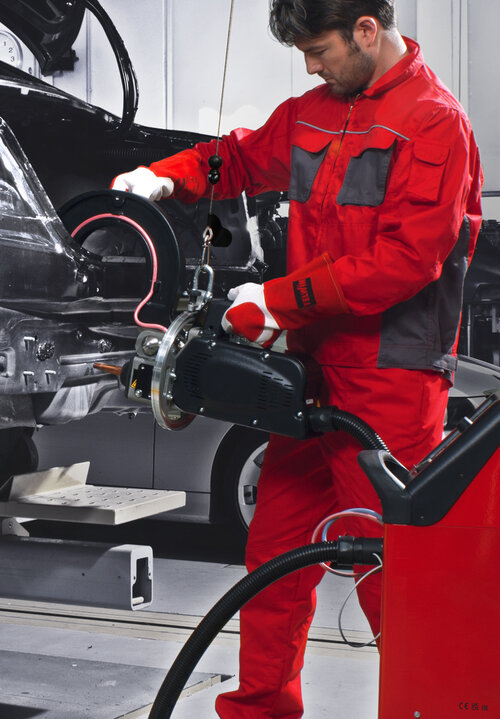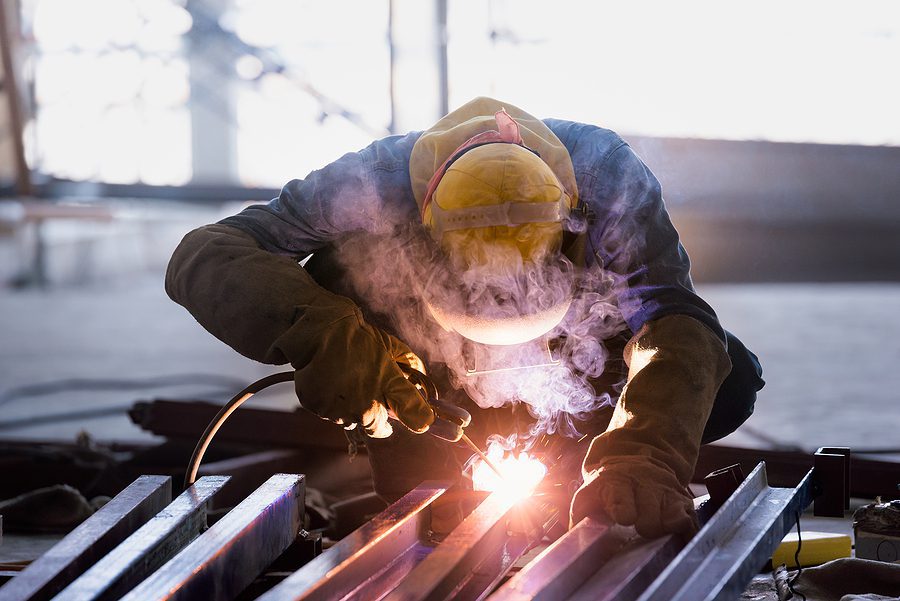Everything about Welding: Trick Insights Into Techniques and Ideal Practices for Success
Welding incorporates a selection of strategies, each suited for particular products and applications. Recognizing these methods, such as GMAW, SMAW, and TIG, is crucial for attaining suitable outcomes. Furthermore, the appropriate equipment and safety and security practices can not be neglected. As prep work and repairing play essential duties in the welding procedure, grasping these elements can significantly enhance the top quality of the end product. What are the essential elements that guarantee an effective weld?
Comprehending Various Welding Methods
Welding strategies incorporate a range of techniques, each fit to certain applications and materials. Amongst the most common strategies are Gas Steel Arc Welding (GMAW), Shielded Steel Arc Welding (SMAW), and Tungsten Inert Gas Welding (TIG) GMAW, additionally referred to as MIG welding, is prominent for its rate and convenience, making it excellent for slim materials. SMAW, or stick welding, is preferred for its simplicity and performance in outdoor settings, specifically with thicker steels. TIG welding uses precision and control, making it ideal for complex work and non-ferrous steels (Welding). Each method has its unique advantages and factors to consider, enabling welders to pick the best technique based upon the task's needs, product type, and wanted outcomes. Understanding these methods is important for successful welding
Important Welding Tools and Tools
While numerous welding strategies call for details skills, the best equipment and devices are just as important for attaining top quality outcomes. Necessary welding equipment consists of welding machines, which vary depending on the technique-- such as MIG, TIG, or stick welding. Safety equipment, including aprons, handwear covers, and safety helmets, warranties security and comfort throughout the procedure. Furthermore, clamps and components assist protect products in location, making sure precision in welds. Consumables like welding rods, wire, and protecting gas are likewise important components that influence the high quality of the weld. Tools such as cutters and grinders promote surface area preparation and post-weld finishing, adding to a professional end result. Investing in high-quality tools inevitably enhances the efficiency and efficiency of welding projects.
Security Practices in Welding
Correct security methods are important in the welding industry to secure workers from possible dangers. Welders should put on appropriate individual safety tools (PPE), consisting of safety helmets with correct shading, handwear covers, and flame-resistant clothes. Sufficient ventilation is vital to minimize exposure to harmful fumes and gases produced during the welding procedure. Additionally, workers need to be learnt the correct handling of welding equipment to protect against mishaps. Fire security actions, such as keeping combustible products away from the welding area and having fire extinguishers conveniently available, are essential. Regular assessments of tools and work areas can aid recognize possible hazards before they bring about mishaps. By sticking to these safety methods, welders can create a safer working setting and decrease threats related to their profession.
Readying Materials for Welding
Preparing products for welding is an essential action that substantially influences the high quality and stability of the last product (Fabrication). Appropriate preparation includes cleaning up the surface areas to eliminate contaminants such as rust, dirt, and oil, which can compromise the weld. Methods such as grinding, sanding, or making use of solvents are commonly utilized to accomplish a clean surface. In addition, guaranteeing that the materials fit together snugly is necessary; voids can bring about weak welds. It's additionally vital to think about the placement and positioning of the parts, as this will influence the simplicity of welding and the last result. Finally, selecting the ideal filler product and ensuring compatibility with the base steels is crucial for achieving solid, durable welds
Tips for Getting High-Quality Welds
Achieving high-quality welds needs focus to information and adherence to finest practices throughout the welding procedure. Correct joint prep work is crucial, ensuring surfaces are tidy and complimentary from pollutants. Picking the ideal filler material and welding method based upon the base metals is critical for excellent bonding. Preserving constant travel speed and angle while welding can avoid issues and advertise harmony. Furthermore, regulating warmth input is necessary; too much heat can bring about warping and compromised joints. Frequently evaluating the welds throughout the procedure permits immediate changes if necessary. Using proper post-weld treatments, such as cleaning and stress alleviation, can boost the resilience and integrity of the weld, ultimately making certain an effective outcome.
Troubleshooting Usual Welding Issues
Welding commonly offers obstacles that can influence the high quality and stability of the end product. Typical issues such as porosity, irregular weld beads, and overheating can emerge, each requiring specific repairing strategies. Recognizing these issues is necessary for welders to boost their skills and accomplish excellent outcomes.
Porosity Issues Explained
Although porosity can commonly be forgotten, it continues to be an essential concern in welding that can jeopardize the integrity of a finished item. Porosity describes the presence of little gas pockets within the weld bead, which can lead and compromise the joint to premature failing. This trouble normally emerges from contaminants, wetness, or improper securing gas coverage during the welding process. To mitigate porosity, welders ought to validate that the base materials are tidy and dry, utilize appropriate protecting gases, and maintain consistent welding criteria. Frequently examining the devices and environment can also assist recognize potential problems before they manifest in the weld. Attending to porosity effectively is necessary for attaining strong, durable welds that satisfy high quality criteria.

Inconsistent Weld Beans
Irregular weld grains can significantly affect the quality and toughness of a completed product. Numerous aspects contribute to this issue, including incorrect travel speed, incorrect amperage settings, and irregular electrode angles. When the welder relocates also swiftly, a grain might appear slim and do not view it now have infiltration, while moving too slowly can cause excessive build-up. Furthermore, making use of the incorrect amperage can result in either damaging or excessive spatter, both of which concession weld integrity. The welder's technique, such as irregular torch motion, can also cause unequal grain look. To alleviate these issues, welders should concentrate on preserving steady, regulated motions and guaranteeing appropriate tools setups to attain uniformity in their welds. Consistency is crucial to attaining solid and tag welding trustworthy welds.
Overheating and Bending Issues
Excessive warm throughout the welding process can bring about substantial getting too hot and warping problems, affecting the structural stability of the workpiece. These issues typically show up as distortion, which can jeopardize placement and fit-up, making more setting up testing. Elements adding to overheating consist of the selection of welding specifications, such as voltage and take a trip rate, as well as the kind of product being bonded. To mitigate these issues, welders should keep consistent traveling rate and ideal warm input while keeping track of the workpiece temperature. Furthermore, pre-heating or post-weld warmth therapy can aid relieve tensions triggered by quick cooling - Belgrade Welding. Normal assessment and adherence to ideal practices are important in avoiding overheating and making sure the durability and reliability of bonded structures
Often Asked Concerns
What Are the Profession Opportunities in the Welding Market?
The welding industry uses varied profession opportunities, consisting of positions as welders, inspectors, designers, and teachers. Experts can operate in manufacturing, construction, aerospace, and automotive industries, taking advantage of solid demand and affordable incomes in various duties.
Exactly How Can I Enhance My Welding Rate Without Compromising Quality?
To boost welding speed without giving up high quality, one should practice effective methods, keep tools, maximize setups, and improve hand-eye coordination. Regular training and seeking comments can additionally greatly add to accomplishing faster, premium welds.
What Certifications Are Readily Available for Welders?
Numerous qualifications exist for welders, including those from the American Welding Culture (AWS), the National Center for Building Education And Learning and Research Study (NCCER), and numerous industry-specific organizations. These qualifications enhance employability and demonstrate ability proficiency.
Exactly How Does Welding Influence the Characteristics of Metals?
Welding affects the homes of steels by changing their microstructure, which can result in adjustments in stamina, ductility, and solidity. Heat input and air conditioning rates during the process substantially influence these product features.
Can I Bonded Dissimilar Metals With Each Other?
